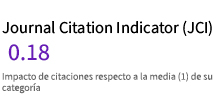The stylization of popular comic culture in Spanish cinema
DOI:
https://doi.org/10.24310/Fotocinema.2023.vi26.16148Abstract
El monográfico de la revista Fotocinema que presentamos cobra todo su sentido al plantearse como una oportunidad de revisitar, en concreto, la cultura cómica popular española, que es actualizada y renovada en el cine español de todos los tiempos, sin dejar de lado los movimientos internacionales que pudieran terciar en el mestizaje final de las obras a estudio. Haciendo uso del análisis textual y de la indagación histórica y teórica, los artículos que forman parte del monográfico abordan la obra de directores como Luis García Berlanga, Fernando Fernán Gómez, Manuel Summers, Pedro Almodóvar, Fernando León de Aranoa, Pablo Berger o Ángeles Reiné; sin dejar de lado el papel de relevantes escritores fundamentales en el cine español, como Miguel Mihura, Antonio de Lara (Tono) y Rafael Azcona; así como de actrices imprescindibles en la comedia desarrollista, como Gracita Morales y Lina Morgan.
Downloads
Metrics
References
García Berlanga, L. (1997). Discurso Doctor Honoris Causa por la Universidad Politécnica de Valencia, leído en el acto de su investidura el día 2 de octubre de 1997. https://www.upv.es/organizacion/la-institucion/honoris-causa/luis-garcia-berlanga/discurso-es.html
García Berlanga, L. (1989) El cine, sueño inexplicable. Discurso leído en el acto de Recepción Pública en la Real Academia de Bellas Artes de San Fernando, Madrid. https://berlangafilmmuseum.com/escritos/el-cine-sueno-inexplicable/
González Requena, J. (1990), Rafael Gil: cinco films. Archivos de la Filmoteca, Año I, nº4: Cifesa, de la antorcha de los éxitos a las cenizas del fracaso, 74-85.
Gubern, R. (2008, 2 feb). ¿Por qué no gusta el cine español? El País. https://elpais.com/diario/2008/02/02/opinion/1201906812_850215.html?event_log=oklogin?event_log=oklogin
López-Alonso, Álvaro (1960). Luis García Berlanga. Director de cine. Tele Radio. Revista semanal de TVE-RNE, 147, 12-13. https://berlangafilmmuseum.com/1960_teleradio/
Partearroyo, M. (2020). Luces de varietés. Lo grotesco en la España de Fellini y la Italia de Valle-Inclán (o al revés). La uña rota.
Pérez Perucha, J. (2021). Narración de un aciago destino (1896-1930), en R. Gubern, J. E. Monterde, J. Pérez Perucha, E. Riambau y C. Torreiro, Historia del cine español (10ª ed., pp. 19–121). Cátedra.
Zunzunegui Díez, S. (2018). Historias de España. De qué hablamos cuando hablamos de cine español. Shangrila.
Downloads
Published
How to Cite
Issue
Section
License
All contents published in Fotocinema Revista científica de cine y fotografía are protected under the Creative Commons Attribution-NonCommercial-ShareAlike 4.0 International (CC BY-NC-SA 4.0) license. All about this license is available in the following link: <http://creativecommons.org/licenses/by-nc-sa/4.0>
Users can copy, use, redistribute, share and exhibit publicly as long as:
- The original source and authorship of the material are cited (Journal, Publisher and URL of the work).
- It is not used for comercial purposes.
- The existence of the license and its especifications are mentioned.
There are two sets of authors’ rights: moral and property rights. Moral rights are perpetual prerogatives, unrenounceable, not-transferable, unalienable, imprescriptible and inembargable. According to authors’ rights legislation, Fotocinema. Revista científica de cine y fotografía recognizes and respects authors moral rights, as well as the ownership of property rights, which will be transferred to University of Malaga in open access. The property rights are referred to the benefits that are gained by the use or the dissemination of works. Fotocinema. Revista científica de cine y fotografía is published in an open access form and it is exclusively licenced by any means for doing or authorising distribution, dissemination, reproduction, , adaptation, translation or arrangement of works.
Authors are responsable for obtaining the necessary permission to use copyrighted images.













13.png)



